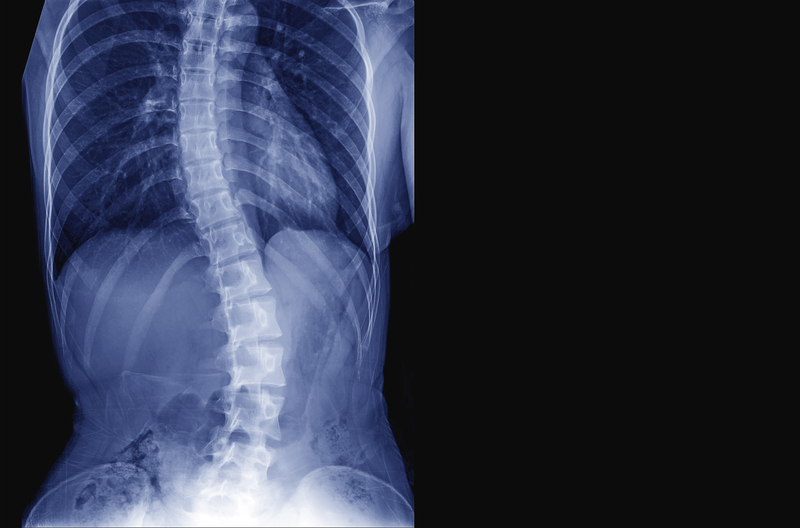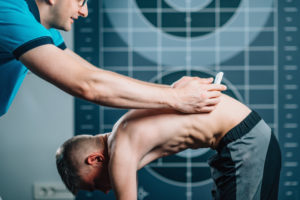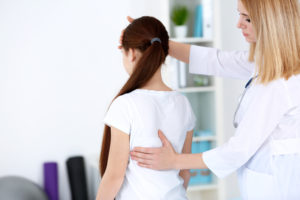11 Jul Can You Reverse Your Scoliosis?
Have you ever been told to “sit up straight?” It’s not just something parents like to do, but something good for your health. A healthy spine has an inward curve in the lower spinal region, but it should never curve towards the left or the right side. This is a sign of scoliosis, or an abnormal curvature of the spine. It can take years for scoliosis to set in, and this condition can be debilitating without treatment. With the right treatment, you actually can reverse your scoliosis.
What Is a Healthy Back?
Your back is an integral part of your health. Problems in the back can cause disruptions in other parts of your health and can render you unable to work, exercise, sleep, and function. Your back is so important that it is also where your spinal cord is housed, which connects to your brain.
The delicate nerves in your central nervous system (spinal cord and brain) are essential to your body functioning. They are protected by 33 strong vertebrae bones that make up your spinal column. A healthy back and spine has all of these vertebrae connected, with cartilage and tissues between them that help your vertebrae to move smoothly while protecting vital nerves.
Your back is separated into three separate areas: the cervical spine consisting of 7 vertebrae in the neck area, the middle, thoracic spinal vertebrae (12) and the lower, lumbar spine vertebrae (5). If people experience back pain, the majority have lower back pain in the lumbar spine. This is because the lumbar spine takes the most pressure and force of day-to-day living and movements from the limbs. 31 million people just in the United States alone have lower back pain. A painful back should be evaluated for problems such as pinched nerves, injuries and scoliosis.
What Is Scoliosis?
One of the causes of back pain is scoliosis. This is a condition where the spine of the back curves abnormally. A healthy spine will have an inward curve in the lower portion of the back (lumbar region). However, it’s not healthy when the spine curves towards the right or left side of the body, indicating scoliosis. This is a surprisingly common back problem that millions of children get screened for every year. 6-9 million people in the United States are found to have scoliosis, which is about 2-3%.
A person may not know they have scoliosis until they are screened or until they start to have health problems. This condition can be detected by patients themselves if they have:
- Uneven hip or shoulder alignments
- A twisted torso or ribcage
- Difficulty breathing, even when no physical activity is being done
- Prominent shoulder blade exposure on one side or the other
- A dull ache around the spine
Causes and Information
The American Association of Neurological Surgeons reports that women are more likely to get scoliosis than men—8 times more likely in fact. It’s not always an adult problem either, although scoliosis can develop as an adult. The usual age of onset is between 10 and 15 years old, which is why children are generally screened at school for signs of scoliosis. This can happen due to genetics or malformation of the spine in the womb. However, many cases of scoliosis are unknown. A person can have it even if they don’t have a genetic history for it and even if they “sit up straight” and take care of their back health.
However, we do know that some causes of scoliosis include:
- Cerebral palsy and muscular dystrophy
- Birth defects
- Tumors or bone growths that push the spine
- Infections of the spine
- Injuries to the ligaments and tendons supporting spinal alignment
- Leg length inequalities that push the entire skeleton out of line
Symptoms of scoliosis should never be ignored, as the condition can progress without treatment.
Treating Scoliosis
You always want to catch spinal curvature when it is small. Minor curvature can be corrected through simple treatments and therapies done correctly over time. These include:
- Spinal adjustment through proper stretching, traction treatments and chiropractic adjustment
- Muscle relaxation with massage and electrostimulation
- Lifestyle changes to encourage back strength so your spine is properly supported
Observation for your condition is also something you should invest your time in. Even if you have been diagnosed with idiopathic and mild scoliosis, annual or biannual check-ups can ensure the condition isn’t worsening. We can start a non-invasive treatment plan as soon as the condition is discovered to prevent the development of life-altering symptoms. If a family member is susceptible to scoliosis, early prevention and treatment as a child and teen can prevent spinal changes from affecting their appearance.
Reverse Your Scoliosis
If you have scoliosis already (even if it is severe), you can reverse the condition. Depending on the severity, it may take time and effort on your part to fully heal and reverse your spine curvature. If you already have spinal curvature or if you want to prevent it, proper posture never hurts. Always sit up straight if you can, just like you heard when you were a kid. This not only can strengthen your back, but can help relieve pressure from joints and muscles, and can prevent problems such as knots in your back.
Exercising and getting help from a professional to exercise correctly can help reduce your risk for scoliosis. This is especially helpful for patients who lift weights. Always find out how to correctly do something and then do it with correct posture to avoid injury. Yoga has also been found to help with scoliosis. You can do yoga at home or receive stretches from professionals at our office. Have a healthy diet that is also rich in vitamins and minerals so your body has what it needs to build muscles and bones strong. For tips and recommendations on preventing and reversing your scoliosis, call Mile High Spine & Pain Center today at (720) 507-0080!




